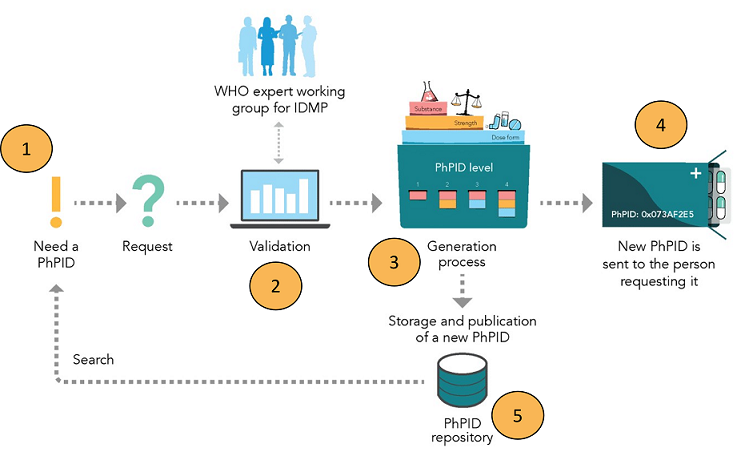UMC IDMP Request and Publish API, published by Uppsala Monitoring Centre. This guide is not an authorized publication; it is the continuous build for version 0.1.0 built by the FHIR (HL7® FHIR® Standard) CI Build. This version is based on the current content of https://github.com/Uppsala-Monitoring-Centre/WHO-UMC-IDMP-Service/ and changes regularly. See the Directory of published versions
Operating model
Operating model
Following is a picture of the operating model for requesting and publishing PhPIDs.

Operations
- A requester in need for a global PhPID sends a request containing the product information.
- The sent in request is validated against GIDWG Business rules by pharmacists in the maintenance organisation.
- The validated and harmonized dose form attributes, substance and strength information is used as input string in the generation of PhPIDs.
- The requester receives the PhPIDs, levels 1-4, for their medicinal product.
- The generated PhPIDs are stored in the PhPID repository.
Corresponding FHIR operations
- A FHIR Task is used to request a new global PhPID where necessary information to complete the request is embedded in the contains section of the Task. See PhPID request model for details.
- While validating the request the status of the Task indicates to progress.
- The Task is ready and transits to completed via in-progress.
- The new (or already existing) Global PhPID is published in the output section of the Task and is thereafter available as an AdministrableProductDefinition resource.
- Searching for an existing PhPID can be done using standard search functionality. Search and filter parameters is available in the Capability Statement.
